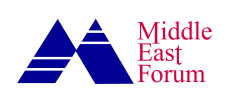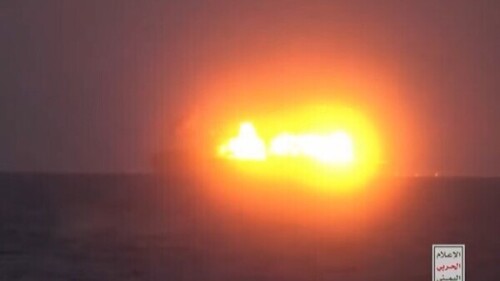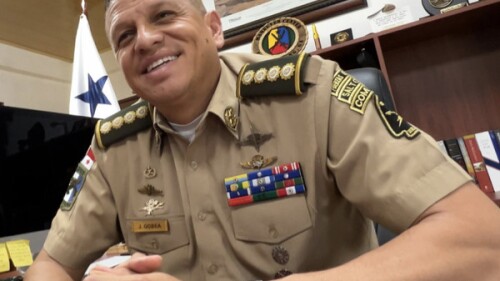Hezbollah leader Hassan Nasrallah’s frequent bouts of coughing during a May 25 speech from his bunker sparked speculation about his health. |
Iran recently released an interesting photo. It shows the head of the Islamic Revolutionary Guard Corps Quds Force Qasem Soleimani sitting with one of his deputies, named Mohammed Hejazi, and Hezbollah leader Hassan Nasrallah. Soleimani was killed by the US in 2020. Hejazi died in April. Nasrallah appears to be sick now. Rumors have suggested he could die. Even if he doesn’t it leads to questions about a post-Nasrallah Hezbollah.
Men like Nasrallah are key to Iran’s role in the region. These men, along with Imad Mughniyeh, a Hezbollah leader who was killed in 2008 and Abu Mahdi Al-Muhandis, head of Kataib Hezbollah in Iraq, were key to Iran’s dominance of the region. Muhandis was killed in 2020 alongside Soleimani. Hejazi was a key to Iran’s precision-guided munitions project and building up Iran’s network in the region by moving those missiles to Hezbollah.
Nasrallah likes to give speeches, usually in his bunker where he has been hiding since the 2006 war on Israel.
Even in the bunker, though, he has appeared impressive and he articulates a growing command of the region and Hezbollah’s role in Iran’s worldview. Hezbollah is a powerful terror organization with some 150,000 missiles and a parallel state-within-a-state in Lebanon. It has networks from West Africa to South America, from Lebanon to Iran and beyond. It plays a role in Syria and Iraq and works now with the Houthis in Yemen.
But Nasrallah’s appearance suggests he may be declining in health. Hezbollah supporters say he has a cold or maybe pneumonia. Other rumors say he got Covid. Nasrallah’s impressive speeches were key to how he is perceived.
Professor Eyal Zisser writing in Israel Hayom says that “this entire perception crumbled, however, with the sound of his first cough and the many more that followed. Thus Nasrallah’s victory speech became his ‘coughing speech,’ and instead of focusing on his threats and bombastic declarations, his health situation drew most of the headlines.”
Nasrallah has been the preeminent leader of Hezbollah for nearly three decades.
Zisser makes an important point: “Contrary to Hamas, which has replaced its leaders numerous times, not in the least due to several assassinations attributed to Israel, Nasrallah has been the sole, dominant leader of Hezbollah for close to three decades now. As with any typical Middle Eastern dictator, he made sure a possible successor never emerged, which brings us to the questions currently arising in Lebanon about the day after Nasrallah, which, even if delayed, is still inevitable.”
This is important because Hezbollah grew into its own under Nasrallah. It became a phenomenally powerful organization, more powerful than Lebanon and more powerful than many small states. It helped to save the Syrian regime during the Syrian civil war, intervening in 2012 and helping the Assad regime hold the line until the Russian intervention in 2015. Despite the fact that it can only recruit from a relatively small Shi’ite population in Lebanon of several hundred thousand military age men, Hezbollah has been able to recruit thousands, many of whom became casualties in the recent war in Syria. Many others became veterans, increasing their abilities.
With Mughniyeh dead, Hejazi dead, Soleimani dead, Muhandis dead, Nasrallah is the proverbial last of the Mohicans.
Nasrallah played a key role in this and is in many ways one of the last of the key Iranian axis members in the region. With Mughniyeh dead, Hejazi dead, Soleimani dead, Muhandis dead, Nasrallah is the proverbial last of the Mohicans. ...
Not much is known about his health, except rumors. One article says he underwent a direct examination by a specialist doctor, and there was no need for hospitalization.
Supposedly a doctor who had been in the US was also consulted as were experts in local medicine. He may be taking folk remedies such as “eucalyptus leaves, which are famous in the field of relieving coughs, infections, seasonal allergies and improving lung health,” according to an article at Al-Jumhuriya. “Nasrallah continues to work and keeps up with the files concerned, at a measured pace via the internal phone, and he communicates whenever needed with party officials who fall within the circle around him,” the article continues.
This is also what people said about Stalin even when he was incapacitated. Hezbollah says Nasrallah has some allergies, and that he will be fine. The region waits to find out.
Seth J. Frantzman is a Ginsburg-Milstein Writing Fellow at the Middle East Forum and senior Middle East correspondent at The Jerusalem Post.







